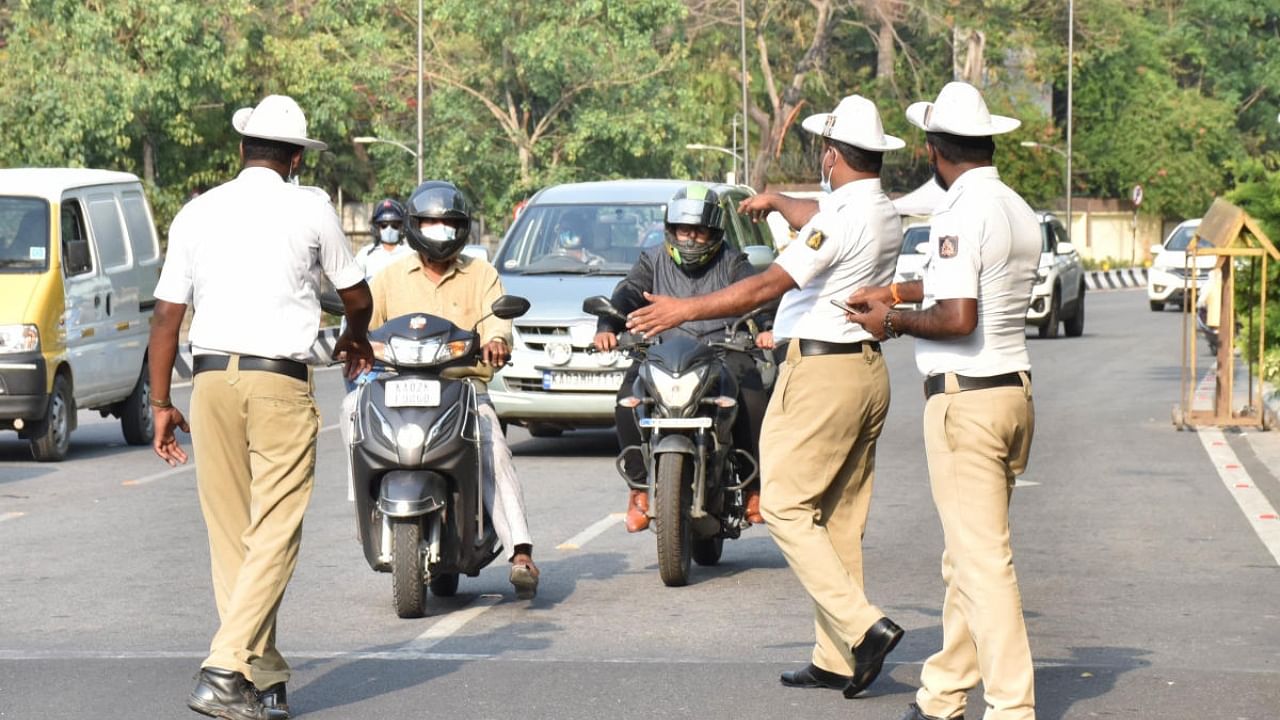
In a renewed crackdown on traffic violators, Bengaluru police have restarted stopping vehicles for visible violations on roads, raising questions about the limitations of automated enforcement and igniting concerns about arbitrary physical checks.
On July 1, the traffic police launched a special drive to catch vehicle users, especially two-wheeler users and delivery boys, who commit visible violations that impede traffic and put road users’ safety at risk.
Also Read: Trials and errors: Traffic police’s efforts to ease congestion yield mixed results in Bengaluru
Traffic police officers insisted that the drive would cover only a handful of violations: wrong-side driving, footpath riding/parking and jumping the signal.
The drive comes against the backdrop of studies that show two-wheeler users are most vulnerable to injury and death.
In Dec 2022, the traffic police introduced the Intelligent Traffic Management System (ITMS) in an effort to minimise human intervention in the detection of violations. As the ITMS covered most violations, including jumping the signal, traffic police had promised to nearly eliminate physical checks.
The latest drive, however, upends that.
M N Anucheth, Joint Commissioner of Police (Traffic), insisted that contact enforcement was needed because “there is no other way to curb visible violations as the ITMS doesn’t detect these violations. We can register cases via footage captured by surveillance cameras but that too is a manual process.”
Traffic cops are now manning dense intersections and roads across the city outside peak hours to nab violators.
Anucheth promised that the drive would not obstruct traffic flow and said police personnel had been given the necessary instructions.
“Traffic policemen deployed on the roads wear body cameras that ensure that each case registered is evidence-based and can be verified if necessary,” he added.
After stopping motorists, police will book them under the relevant sections of the IMV Act and the IPC, seize their vehicles and transfer the case to the court, noted a senior traffic police officer.
96 per cent of cases automated
Over 96 per cent of traffic violations in Bengaluru are now detected through technological intervention.
Over the past few years, the city’s traffic police have been pushing for the increased implementation of automation in detecting violations and enforcing traffic rules, as evidenced by data.
A total of 35,73,008 cases have been registered under the IMV Act until May this year. Of them, 34,53,022 cases — 96.17 per cent of the total cases — were registered through contactless means. This is a clear hike in percentage from the 91.92 per cent registered via contactless means in 2022.